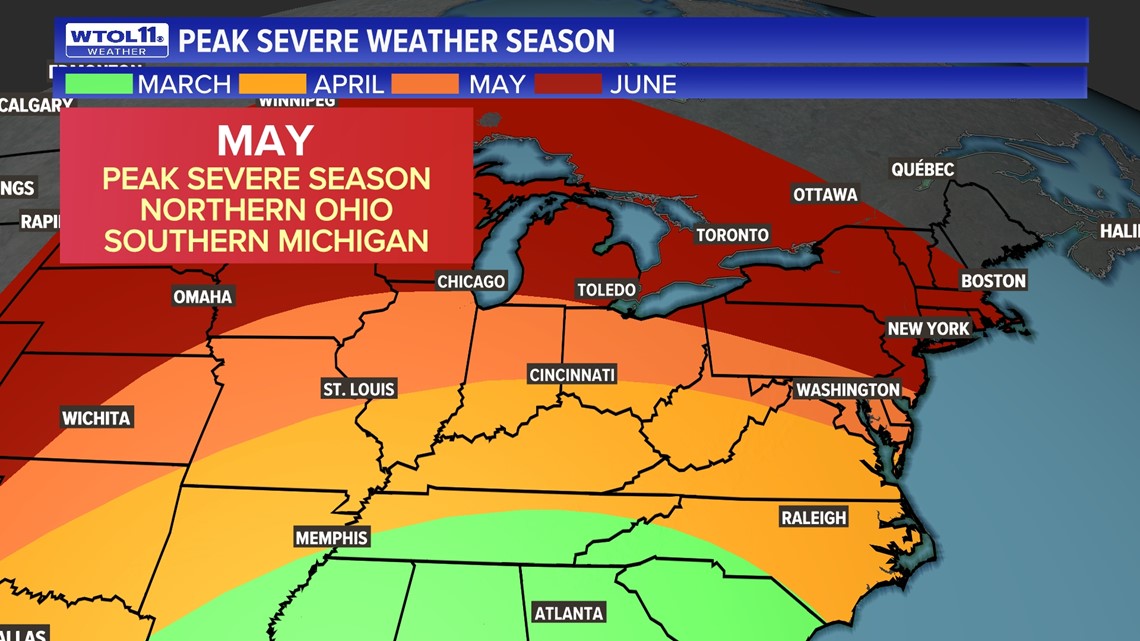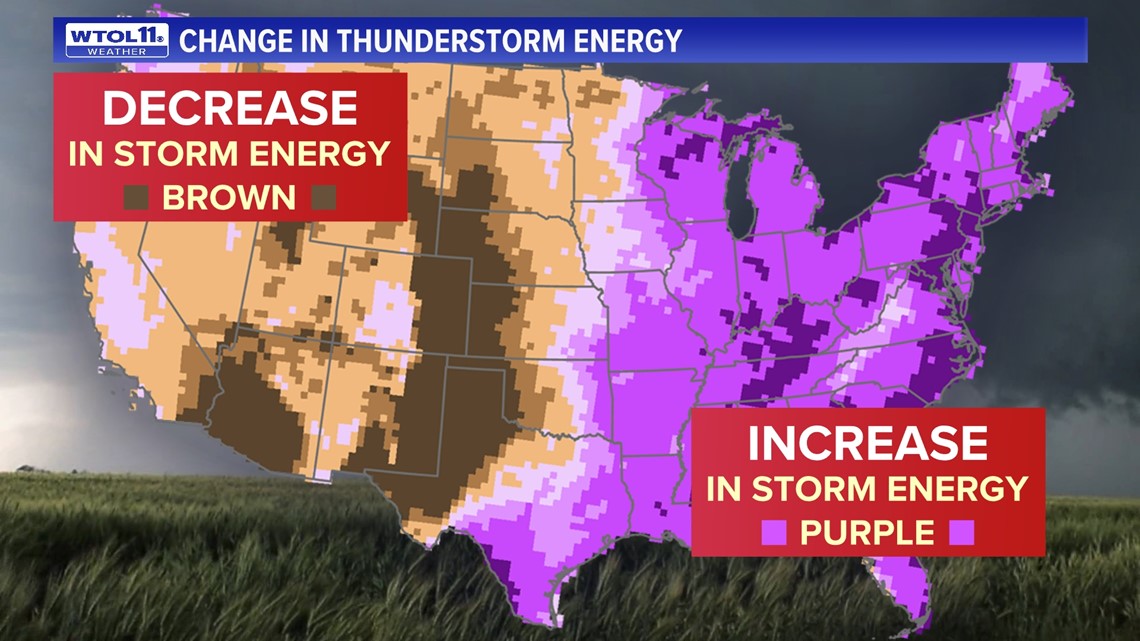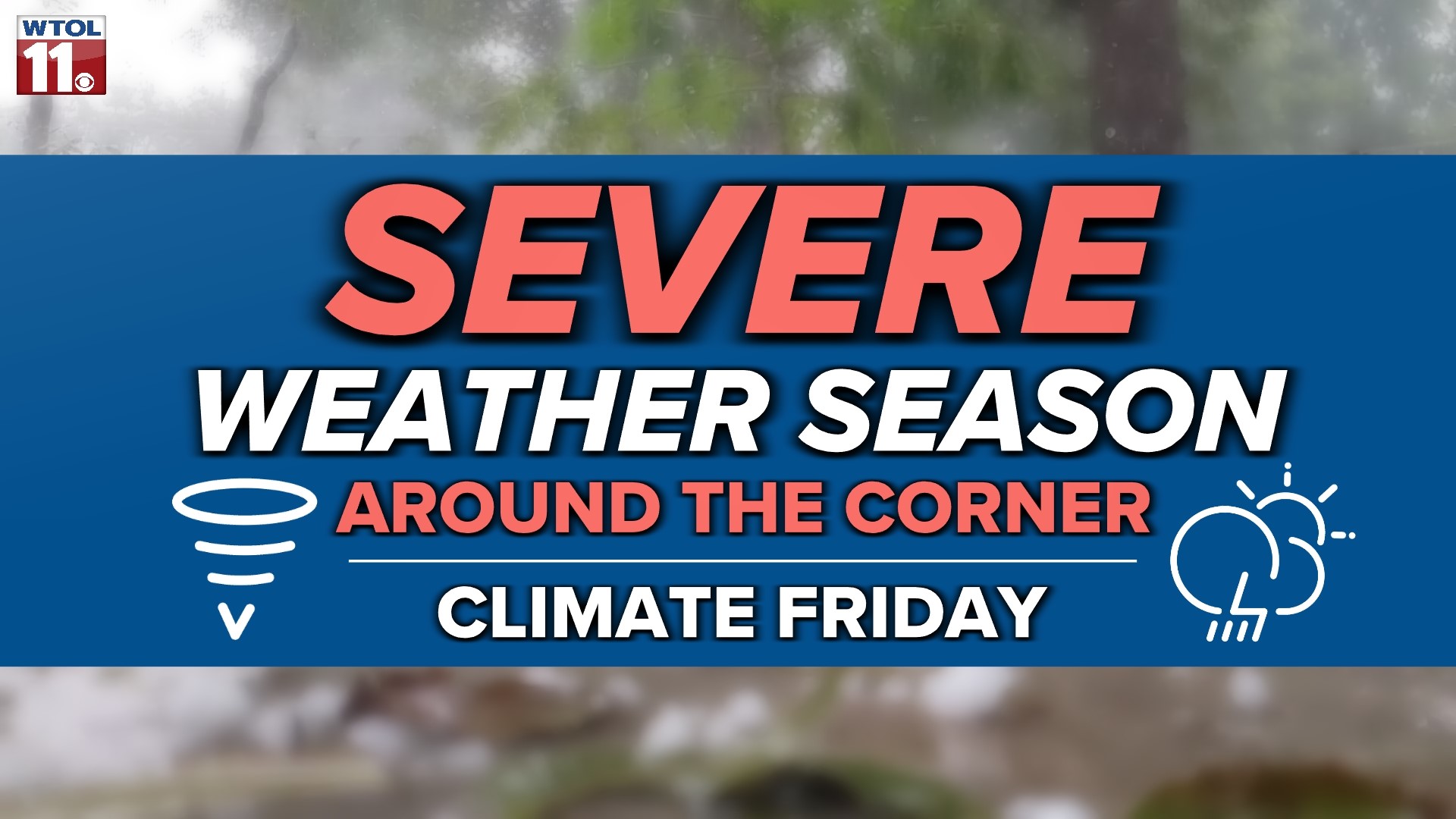TOLEDO, Ohio — Severe weather season is right around the corner and the WTOL 11 weather team is here to keep you safe and informed this spring.
Spring weather turns milder and wetter in April as severe thunderstorms grow more prevalent. What can you expect this storm season? In this week's edition of Climate Friday, we will talk all-things severe weather.
Here's what we'll cover:
- What is normal?
- What does this year have in store?
- How is climate change affecting our storm season?
Severe weather season varies greatly across the United States, generally striking earlier south and later north. Along the Gulf of Mexico, winter thunderstorms are commonplace and severe weather typically peaks in March.
States such as Mississippi, Alabama and Georgia kick off storm season in March, largely due to their proximity to the equator and a warmer and muggier climate. Further north in states like Kentucky and North Carolina, severe season reaches its apex in April.
In the Ohio River Valley, severe season typically peaks in late April and early May.


What about us in northwest Ohio and southeast Michigan? Thunderstorm season normally crescendos in April, peaking in May. May 2022 marks the last time a tornado touched down in the WTOL 11 viewing area, showcasing the active severe weather of this mid-spring month.
On May 3, an EF-1 tornado touched down near Monroeville in Huron County. With estimated peak wind speeds of 90 mph, this twister traveled just shy of half a mile and boasted a width of 50 yards. Since this May tornado, northwest Ohio and southeast Michigan haven't seen a twister touchdown.
Even though northwest Ohio and southeast Michigan experience occasional severe weather and even the rare tornado, locations across the Great Plains receive more frequent and intense severe storms. Known as tornado alley, the region from northern Texas and the Oklahoma Panhandle through Nebraska, Kansas and South Dakota sees intense hailstorms, damaging winds and strong tornadoes more often than just about anywhere else in the country.
Damaging weather still strikes in the Great Lakes region, impacting another hotspot of severe storms from western Indiana and Illinois to Missouri and Kentucky. This corridor southwest of Toledo receives frequent severe storms and tornado touchdowns in April, May and June.
Toledo and surrounding areas experience severe storms far less frequently. The last time the National Weather Service Cleveland office even issued a Tornado Warning for the area was on July 20 for a powerful thunderstorm in Crawford County. Despite this warning, the storm did not produce a tornado. Despite the relatively infrequent occurrence of severe weather and tornadoes in northwest Ohio and southeast Michigan, staying on high alert during the spring months in very important. The WTOL 11 weather team will make sure you're the first to know about any hazardous weather this season.
Is climate change impacting severe weather? Yes, both in terms of frequency, intensity, and location. Climate change has elevated temperatures and thus moisture, causing increased evaporation and thunderstorm fuel.
In Toledo, spring temperatures have warmed up by 2 degrees in the last decade alone. Each degree of warming equates to a 4% rise in water vapor from evaporation. Doing the simple math, this means available moisture for thunderstorms has risen 8% in the last decade.
Moisture fuels thunderstorm development and exacerbates heavy rainfall. This increase in thunderstorm energy, known as convective available potential energy, has impacted the entire eastern U.S. The purple color on this map shows areas that have seen an uptick in thunderstorm energy in recent decades, and the brown color indicates locations that have noticed a decline in storm energy.


Despite the rise in storm energy east of the Mississippi River, many locations in Tornado Alley have observed a drop in storm energy. Due to climate change, the hotspot for severe weather is shifting east. Areas like western Nebraska and eastern Colorado that traditionally were located in Tornado Alley have seen a decline in the frequency of severe thunderstorms and tornadoes.
On the other hand, portions of the Midwest like Missouri, Iowa and Illinois have felt this eastward shift in tornado alley, seeing tornadic thunderstorms more frequently. Due to climate change, Ohio and Michigan may see severe storms more frequently. This eastward flux in severe weather will bring more frequent storms and tornadoes for our area.
The bottom line is climate change's multifaceted impacts on severe weather is affecting Ohio and Michigan. In the future, you'll continue to notice an earlier start to the storm season with more energy for frequent storms.
While the Toledo area will never join the ranks as part of Tornado Alley, it may see more frequent storms in the coming decades.
Thunderstorm season is imminent as we round the corner from March into April. Severe weather will inevitably impact northwest Ohio and southeast Michigan within the next few weeks. While tornadoes are highly infrequent, stay on high alert this storm season in the event of any hazardous weather.
Whatever Mother Nature sends our way this spring season, the WTOL 11 weather team will make sure you're the first to know about any inclement weather.
RELATED VIDEO

